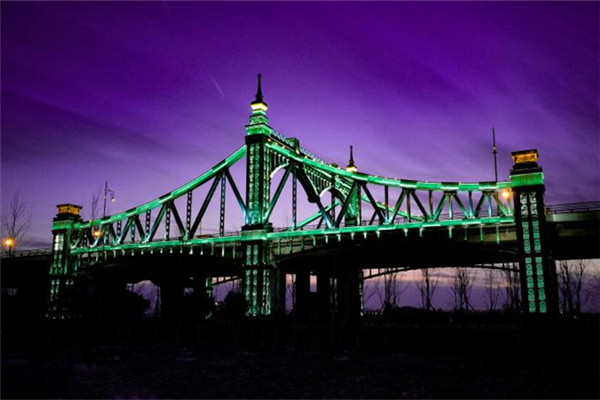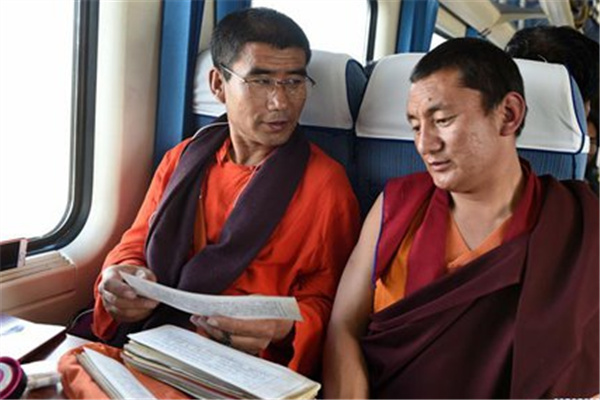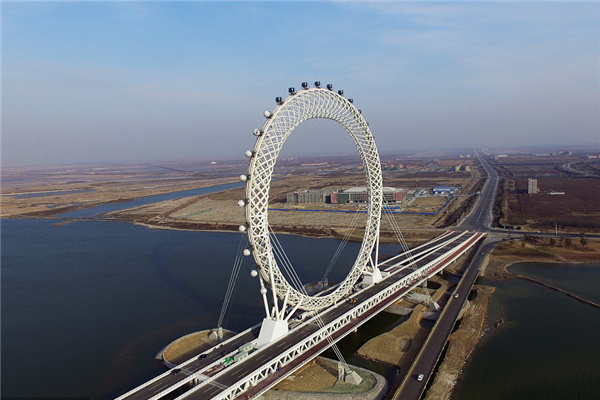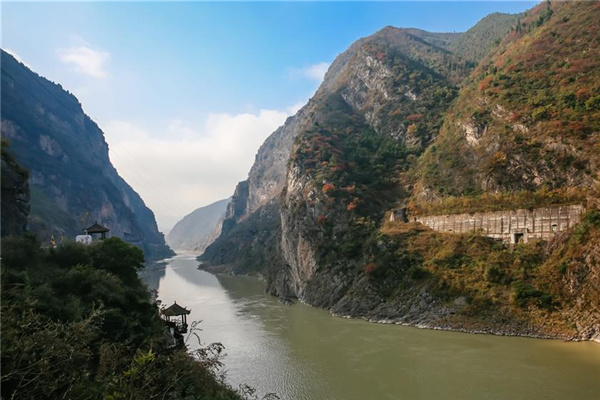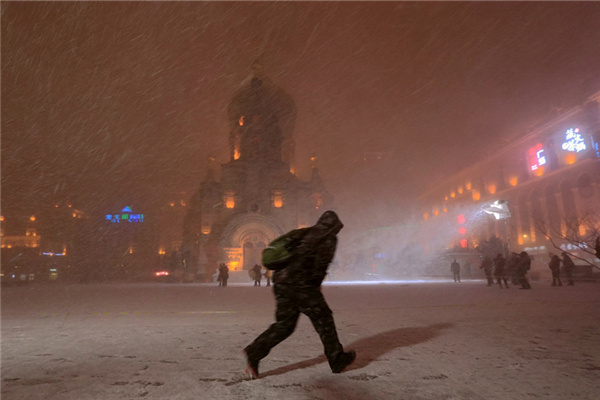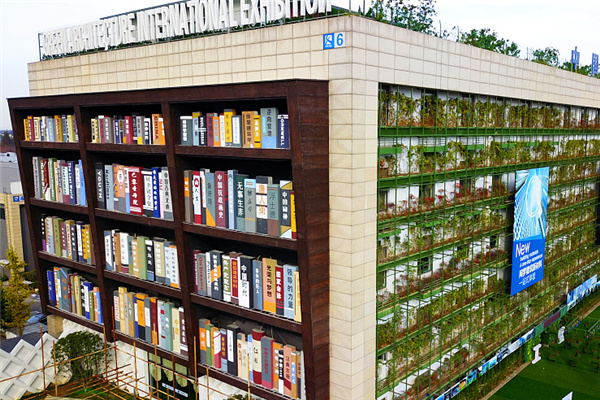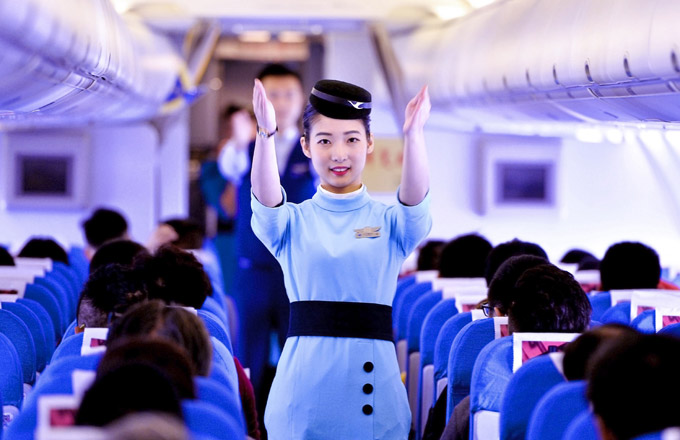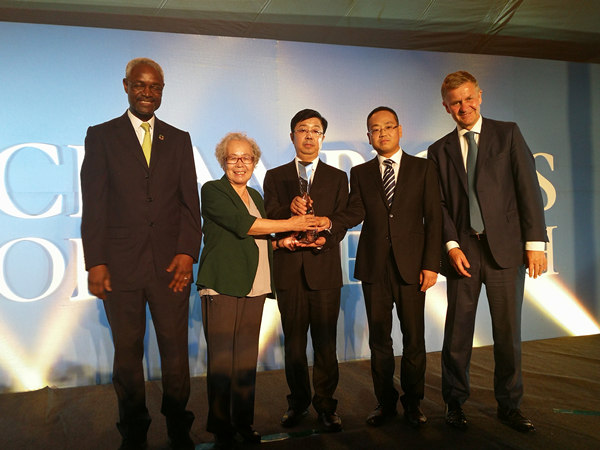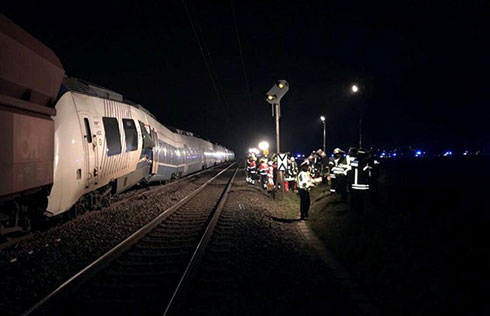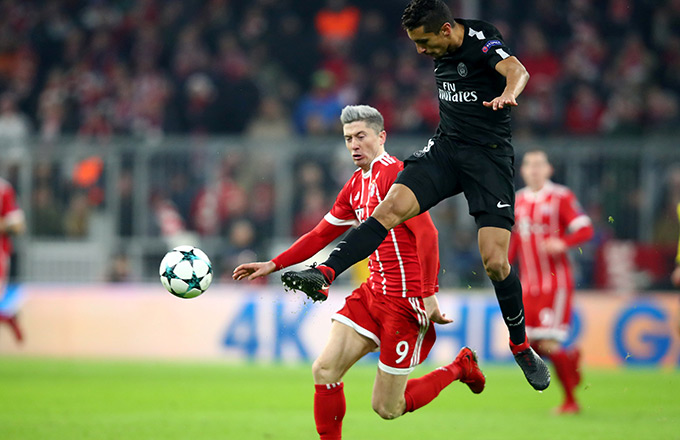

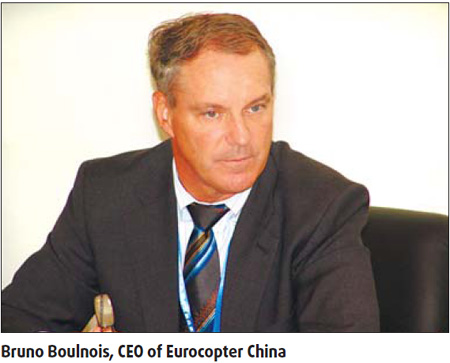
Eurocopter's revenues doubled in China in 2008, and the European civil and military helicopter maker expects the booming trend to continue this year, a senior company executive said.
The country's civil and semi-public sector promises great potential for using helicopters for offshore oil and gas exploration, homeland security, search and rescue operations and other public utility purposes, said Bruno Boulnois, CEO of Eurocopter China.
"Once the low altitude airspace regulations are relaxed, China could rapidly become one of the largest helicopter markets in the world. The country will need at least 300 helicopters by 2015, and the demand could exceed 1,000 helicopters over the next 20 years," Boulnois said.
So far his company's sales target looks on track. The China Rescue and Salvage Bureau, which operates under the Ministry of Transport, ordered two EC225 heavy helicopters in August shortly after the purchase of one EC225 by the Guangdong Provincial Public Security Department.
Earlier this year, the Shanghai Municipal Public Security Bureau ordered one EC120 single-engine light helicopter.
There are less than 180 civil helicopters in China, while the United States has more than 10,000 and Brazil has nearly 500, according to figures from Avicopter Co Ltd.
Avicopter leads the helicopter division under China Aviation Industry Corp (AVIC), the country's leading aviation manufacturer.
Avicopter is even more optimistic than Eurocopter about China's helicopter needs.
Avicopter estimates that China will need 1,440 helicopters by 2018, with 83 percent of the demand coming from the affluent eastern parts of the country, once the government relaxes low altitude airspace controls.
The company plans to deliver 300 civilian helicopters annually beginning in 2018, Xia Qunlin, vice president of Avicopter, said at an industry forum late last month.
A major constraint on the civilian helicopter industry in China is airspace restrictions and the resulting lack of air and ground services.
Except for designated commercial air routes, China's mainland airspace is under the administration of the air force. Insufficient pilot and maintenance crews also hamper development of the industry.
The Chinese government has been reportedly working on a plan to gradually open airspace below 600 meters to facilitate growth in general aviation.
Boulnois said the devastating earthquake in Sichuan province in May 2008 led to demands to equip most areas with helicopters for disaster relief.
Helicopters demonstrated unique advantages in the disaster-relief efforts last year after the earthquake toppled buildings, blocked roads, and destroyed railways and bridges.
Boulnois said the demand for private helicopters also is expected to increase because of the country's rapid economic growth.
Eurocopter recently increased its share from 21 percent to 34 percent in its maintenance joint venture, COHC General Aviation Maintenance & Engineering Co (CGAMEC), in China.
Citic Offshore Helicopter (COHC) now owns 51 percent of the joint venture, while Samwell Aviation of Hong Kong, a distributor of helicopter products, holds the rest of the shares.
The company, based in Shenzhen, was created in 2001 as a joint venture between COHC, Samwell Aviation and Bristow of England, an offshore helicopter operator. Eurocopter became a shareholder of the company in November 2002.
"We increased our share in CGAMEC because the number of helicopters in service in China is increasing. We need to provide CGAMEC more capabilities," Boulnois said.
"We also anticipate that newcomers to the helicopter world, the private users, will need more support. We need to be prepared to provide the newcomers turnkey solutions in terms of pilots, engineers, maintenance, spare parts and technical support," Boulnois said.
Eurocopter plans to set up pilot training facilities with modern simulators in China to cater to the country's growing demand for helicopter pilots, he said.
The European helicopter manufacturer has sold more than 150 helicopters to China since the 1960s. It controls about 40 percent of China's civil and para-public helicopter market and achieved sales of $8.77 million in China last year. It has facilities in Beijing, Shanghai, Shenzhen and Hong Kong.
Expanding operations
Boulnois said Eurocopter is considering establishing a presence in Tianjin in the near future.
Avicopter announced plans earlier this year to develop the northern port city as the headquarters of its helicopter business.
Avicopter's existing production facilities in Harbin (Heilongjiang province), in Jingdezhen (Jiangxi province) and Baoding (Hebei province) will remain unchanged. The Tianjin headquarters will focus on producing light helicopters for civilian use and host research and development, sales and service centers.
"We are talking with Avicopter to see how we can participate in the development of Tianjin. We need to be close to where our best friend is," Boulnois said.
Eurocopter's sister company, Airbus, a commercial aircraft producer, has built an A320 aircraft final assembly line in Tianjin. Both of the two companies are part of European Aeronautic Defense and Space Co (EADS).
"The synergies with what already exists through Airbus or EADS in Tianjin will also help us develop projects in the city," Boulnois said.
Eurocopter and Avicopter are now jointly developing the six-ton EC175 helicopter, also called Z15, in China.
The two companies equally share design and production responsibilities. There will be two assembly lines, one in Harbin, and the other in Marignane, France.
Avicopter delivered the first airframe structure for the EC175 prototype at the end of last year. The helicopter is expected to launch its maiden flight by the end of this year.
China also supplies components to other helicopter producers such as Sikorsky Aircraft Corp and Bell Helicopter.
(China Daily 10/12/2009 page3)
